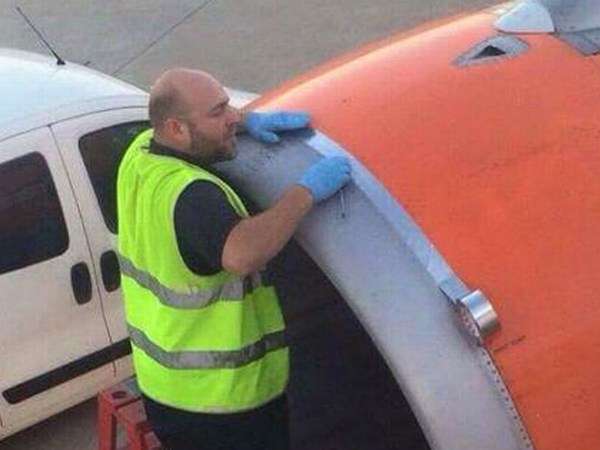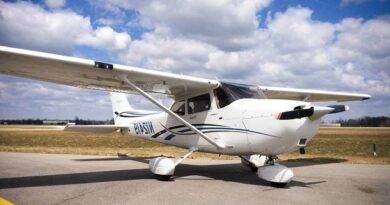What is Speed Tape in Aviation? Usage, Pros, and Cons
In the aviation industry, speed tape is a crucial tool for making temporary repairs on aircraft. It’s a type of heavy-duty aluminum adhesive tape, specially designed to withstand extreme conditions such as high speeds, temperature changes, moisture, and UV exposure. Pilots and ground crews use it for quick fixes on both the interior and exterior of aircraft, allowing for continued operation without causing delays.
But what exactly is speed tape, and how is it used? Let’s explore its purpose, pros, and cons.

image source
What is Speed Tape Made Of?
Aluminum foil combined with a strong pressure-sensitive adhesive forms speed tape. The aluminum provides durability and heat resistance, while the adhesive ensures a tight bond to the surface. This tape sticks firmly to metal, plastic, and composite materials, making it ideal for aviation use. Despite the harsh conditions at high altitudes, speed tape remains secure during flight.
How is Speed Tape Used in Aviation?
Technical crew commonly use speed tape for temporary fixes. While it’s not meant to be a permanent solution, it allows aircraft to fly safely until a more comprehensive repair can be completed. Here are some of the key uses:- Covering Small Surface Damage: If there are minor dents, scrapes, or cracks in the aircraft’s skin, speed tape can cover the area to prevent further damage.
- Securing Loose Panels or Parts: Sometimes, aircraft components may come slightly loose. Speed tape can hold these parts in place temporarily.
- Sealing Gaps and Cracks: If gaps appear in non-critical areas like fairings or access panels, technicians often apply speed tape to seal them.
- Patching Holes or Leaks: Technicians can use it to temporarily cover small holes or leaks in areas like windows or the fuselage.
Pros of Speed Tape
Speed tape offers several benefits that make it a vital tool in aviation maintenance:
- Quick Repairs: Speed tape allows for fast, efficient repairs without grounding the aircraft. This prevents flight delays for minor, non-structural issues.
- Durable: It can withstand high speeds, extreme temperatures, and even exposure to moisture and UV rays. This makes it reliable in various weather conditions.
- Cost-Effective: Speed tape is a low-cost solution to minor issues, saving airlines time and money. It avoids the need for immediate, expensive repairs.
- Highly Adhesive: The tape sticks well to a wide range of surfaces, including metal and composite materials, ensuring a strong hold.
- Regulatory Approval: Aviation regulators like the FAA approve the use of speed tape for temporary repairs, as long as it does not compromise the aircraft’s structural integrity.
Cons of Speed Tape
While speed tape is incredibly useful, it does have some drawbacks:
- Temporary Fix: Speed tape is not a permanent solution. A proper repair must replace it as soon as possible to avoid potential safety risks.
- Possible Misuse: When used improperly or in critical areas, speed tape can create safety concerns. It’s essential that technicians apply it correctly.
- Aesthetic Impact: Speed tape on the aircraft’s exterior may worry passengers. Its presence can give the impression that the plane is not fully maintained, even though it’s safe.
- Leaves Residue: Removing speed tape can leave sticky adhesive residue on surfaces. This requires extra cleaning and can sometimes damage the surface.
- Exposure Limits: While durable, speed tape may degrade over time due to prolonged exposure to extreme temperatures, UV light, or heavy mechanical stress.
Conclusion
Speed tape is a vital tool in aviation, helping airlines avoid delays by enabling fast, temporary repairs. It’s highly durable, cost-effective, and adheres well to aircraft surfaces. However, it should be used with care, as it is not a permanent solution. Trained personnel should always apply speed tape in appropriate situations, and they must follow up with permanent repairs to maintain the aircraft’s safety.
Frequently Asked Questions (FAQs)
- 1. Is speed tape safe for aircraft?
Yes, speed tape is safe when used correctly. Aviation authorities approve it for temporary repairs, provided it does not affect the aircraft’s structural safety. - 2. How long can speed tape be left on an aircraft?
A permanent repair should replace speed tape as soon as possible since it is only a temporary solution. The exact timeframe depends on the airline’s maintenance schedule and regulatory guidelines. - 3. What conditions can speed tape withstand?
Speed tape is designed to withstand high speeds, extreme temperatures, moisture, and UV exposure. However, it should not be relied on as a long-term solution.
By understanding the pros and cons of speed tape, airlines can use it effectively to keep aircraft flying safely while minimizing costly delays. Always ensure that proper repairs follow temporary fixes to maintain long-term safety standards.


